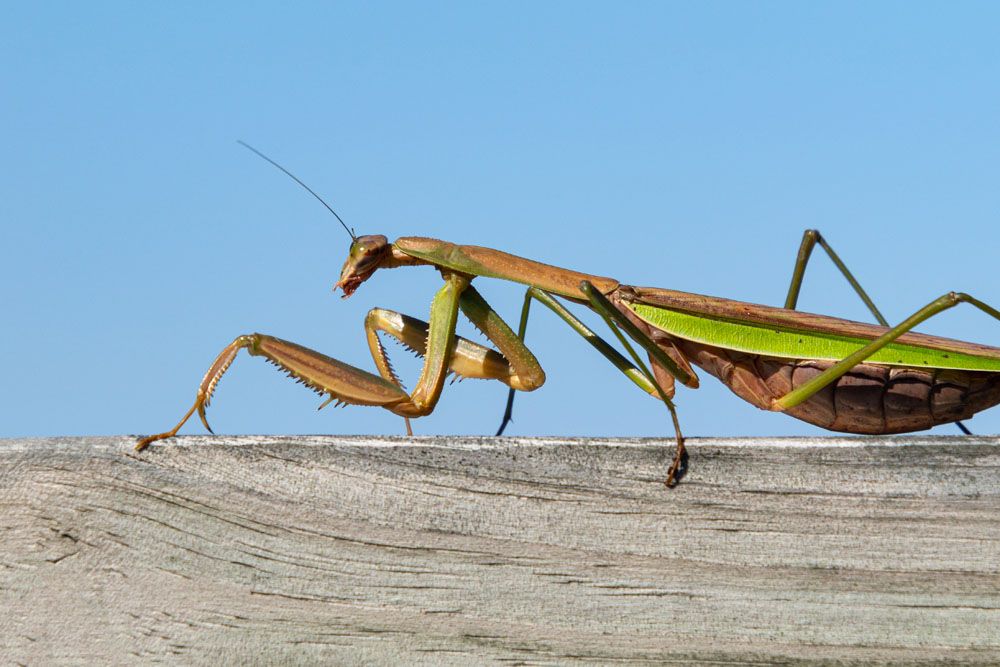
Chinese Mantid – Tenodera aridifolia sinesis
Chinese Mantids
Latin Name: Tenodera sinensis
Common Name: Chinese Mantids, Chinese mantis, Praying mantids, Praying mantis.
Appearance: Chinese mantid is one of the largest mantids in North America, reaching over 100 mm, and has a tan to the pale green body (usually tan). They don’t have a black spot on the coxa. They have characteristics folded forelegs close to the thorax resemble being in prayer-like posture, due to which they are called praying mantids. They have a small triangular head with a square facial shield instead of rectangular (in European mantids) and vertical strips running down. They have large globular brown eyes. They have spiny legs, which they use to capture their prey.
Host Plants or Food: Caterpillars, Bees, Moths, Grasshoppers, Flies, Crickets, etc.
Territory: Asia (Native to China), Northern America, Australia.
Mode of Damage: They prey on different plant pests, so they are considered Beneficial Garden Insect.
Habits and Life History:
- Chinese mantids are found in meadows, gardens, woodlands, field crops, and the areas having more herbs and shrubs. They get mixed with foliage and wait for the prey to come and attack suddenly to capture them.
- Sexual cannibalism is very common in Chinese mantids. The female preys on his partner during or after courtship and gets food.
- Female mantid lays eggs in an ootheca which is attached to stems and twigs formed by the female to protect the eggs from winter. They overwinter as eggs. There are dozens to hundreds of eggs in an ootheca.
- The eggs hatch into nymphs and get dispersed by wind; if they remain crowded together, they start eating one another, and only the solitary will survive.
- Nymphs resemble adults but differ in body size and are wingless.
- Nymphs develop through 7 instars and finally develop into mature Chinese mantids.
- The adult mantid can’t survive winter and perish with the first frost. They have only one generation per year.
